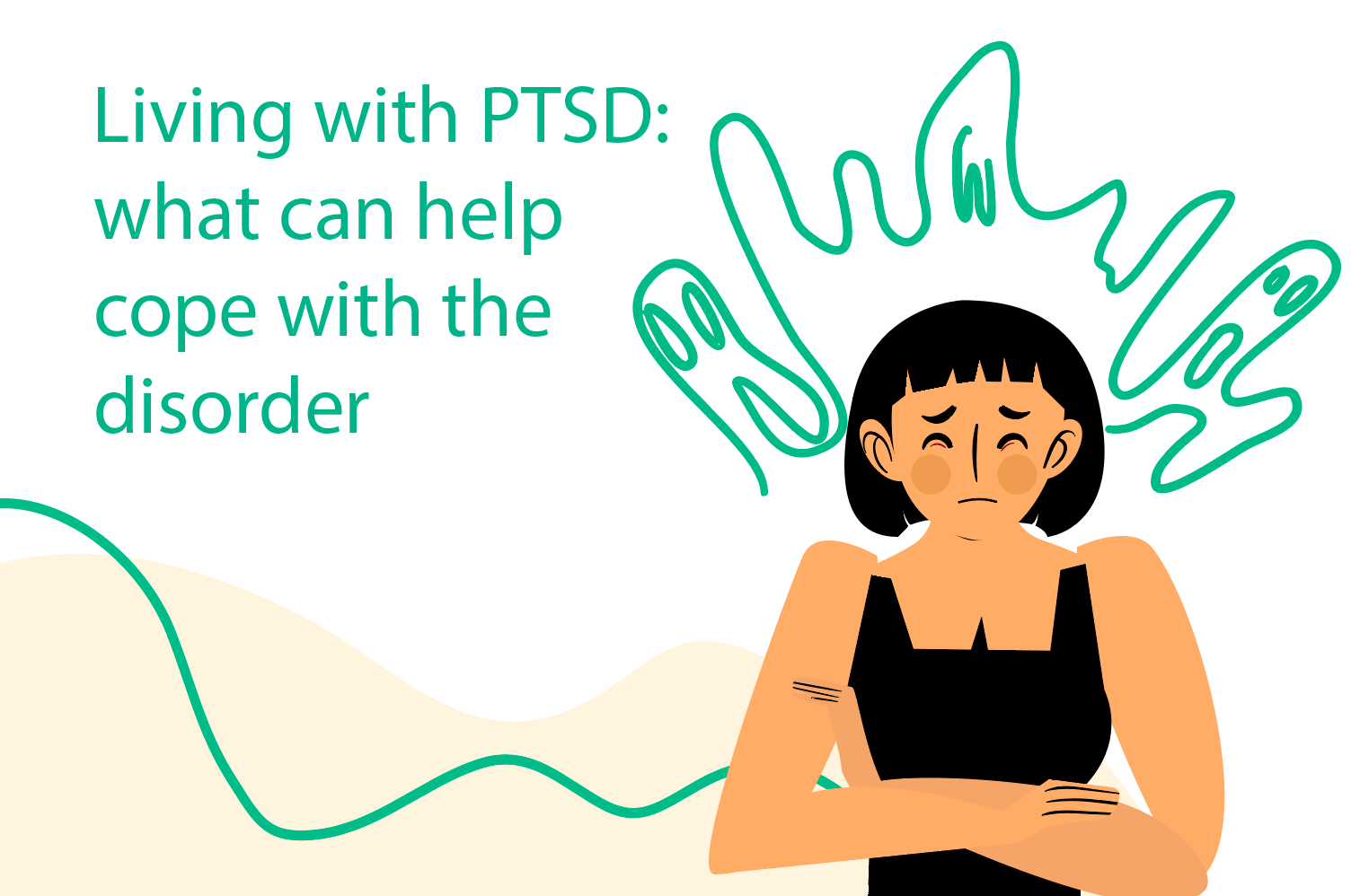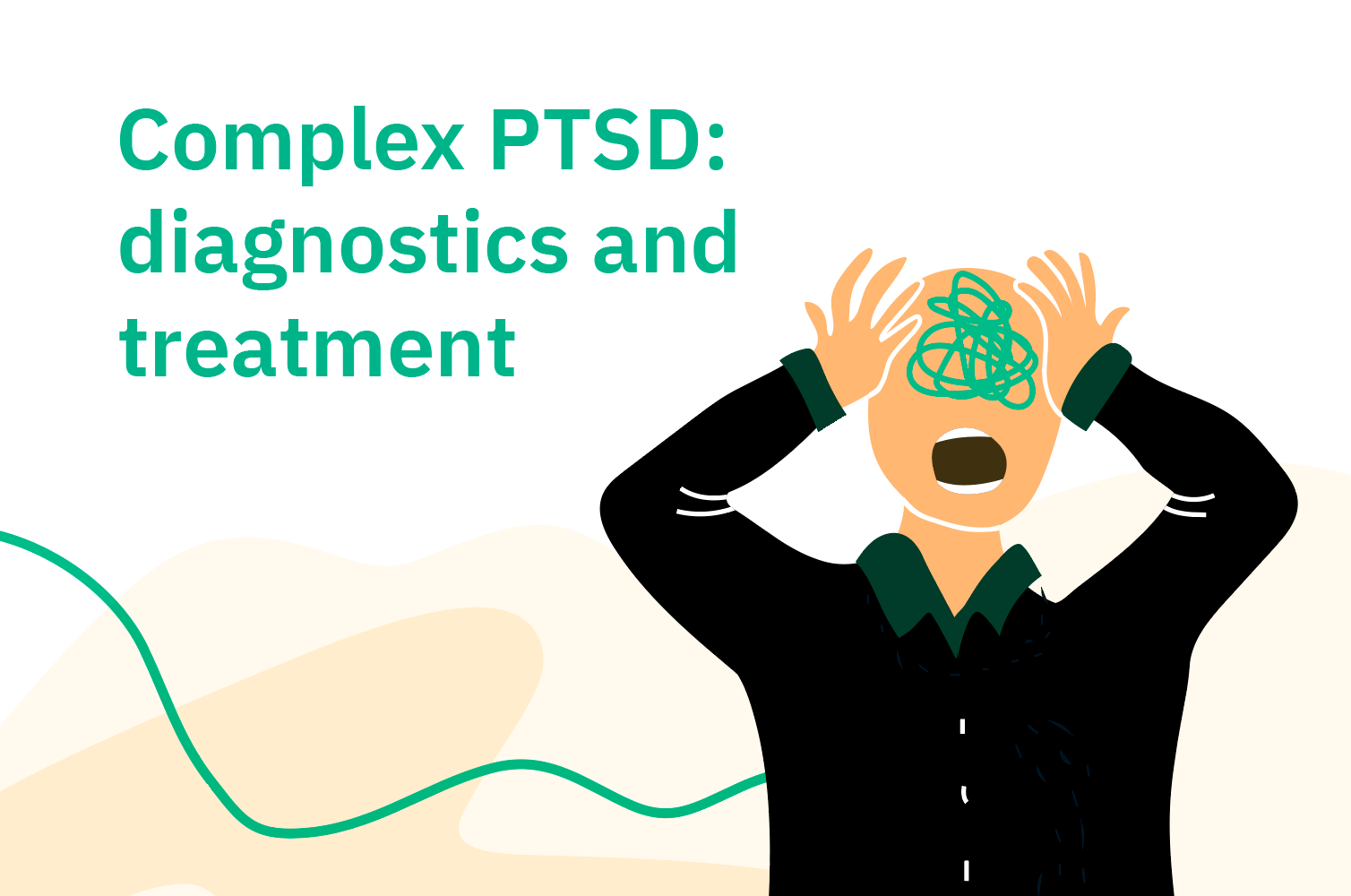
- Home
- PTSD: information for patients
- Symptoms of dissociation in PTSD: definition and therapy

Symptoms of dissociation in PTSD: definition and therapy
Against the full-scale war in Ukraine, you can hear the term “posttraumatic stress disorder” (PTSD) more and more often.
Let us remind you that PTSD is a mental health condition that can occur in people who have experienced or witnessed a traumatic event. For example, war or active hostilities, a natural disaster, a serious accident, or some kind of trauma during which a person experienced disturbance, fear or pain.
What is dissociation
Dissociation is a protective mechanism of the body, which is characterized by the condition when a person is not aware of the thoughts and actions. Dissociation is a hallmark of posttraumatic stress disorder. The same events and experiences that cause PTSD can cause a person to experience a certain degree of emotional detachment from reality. Therefore, dissociative behavior can help diagnose PTSD, and vice versa.
However, there are cases when dissociation is not associated with the initial trauma but develops later as an escape from repetitive obsessive thoughts and severe anxiety attacks. It becomes easier to “detach” from the reality of one’s condition, instead of continuing to relive the experience or coping with constant mental anguish.
Dissociation can also be the point where PTSD and depression intersect.
Get tested to get help early and avoid PTSD exacerbating.

Screening of depression PHQ-9 scale
Although dissociation is one of the important features of PTSD, there is no single definition for the term.
Dissociation (Latin dissociation - disjoining, separation) is characterized by a feeling of separation of the psyche from the body, the psyche from conscious awareness (the feeling of being outside one’s body). This manifests itself in a malfunction of certain mental functions: consciousness, memory, a sense of one’s own identity and the world around.
Dissociative manifestations can make a person feel that what is happening is not real, and cause confusion of consciousness.
In more severe cases, it is impossible to establish contact with a person, he stops responding to what is happening and hardly controls the body at his own will. Seizures similar to epilepsy may occur. Many may even think they are suffering from a serious physical illness.
Types of dissociation
Although each person experiences an individual form of this mental state, usually three main types of dissociation are distinguished:
Depersonalization-derealization disorder. This is when a person disconnects from their own thought process and physical functions. It may seem to him that he is an outside observer of his life and does not control his actions or the actions of others.
Dissociative Identity Disorder (DID). This disorder is associated with being excessively disturbed, with traumatic events and / or abuse that took place in childhood. In the past, this disorder was called multiple personality disorder or split personality disorder. This is when a person switches between two or more personalities.
Dissociative amnesia. This is a type of dissociation in which a person “erases” memories of their personal history and personality.
There is another type that is often mentioned - dissociative fugue. Dissociative fugue is a rare form of dissociative amnesia. People suffering from it can travel far from home, form a new identity, and take on a new job without suspecting anything about the changes in their lives.
Interconnectedness between PTSD and dissociation
Signs of dissociative disorders indicate that they are in fact a symptom of PTSD.
With a dissociative type of PTSD, a person will feel all the same symptoms as with ordinary PTSD: symptoms of re-experiencing, avoidance, hyperexcitability.
People with dissociative PTSD are in no way different. Though they constantly feel dissociated: depersonalization/derealization.
Dissociation, as a psychological defense mechanism, helps a person cope with strong negative emotions caused by the influence of an event or factors of a traumatic situation.
PTSD therapy while having dissociation
Patients with dissociative conditions who seek medical help are often misunderstood or disbelieved, which adds to the complexity of the diagnosis. A thorough physical examination is necessary to rule out the connection of symptoms with any physical disease. This can take quite some time - be prepared for this.
Next, it is important to establish what caused the problem. Clearly, often in such cases the help of a psychotherapist is needed.
If you keep noticing that you or a close relative of yours have symptoms similar to those of dissociation, seek the help of a general practitioner, who will refer you to the appropriate specialist, if necessary. Even though dissociative symptoms can be dramatic and difficult to understand, there is a cure.
Therefore, for treating PTSD with dissociation all elements of the standard treatment for PTSD are used: psychotherapy (eye movement desensitization processing and trauma-oriented cognitive-behavioral therapy), as well as drug therapy.
Sources:
- https://www.psychiatry.org
- https://www.rcpsych.ac.uk/mental-health
- http://psyandneuro.ru/novosti/the-dissociative-post-traumatic-stress-disorder/
- https://www.psychiatrictimes.com/view/reexperiencinghyperaroused-and-dissociative-states-posttraumatic-stress-disorder
- https://psy-practice.com/publications/psikhicheskoe-zdorove/kak-rabotaet-dissotsiatsiya-ptsr-i-travma/
- https://www.steadyhealth.com/ru/stati/chto-nuzhno-znat-o-dissotsiativnom-podtipe-posttravmaticheskogo-stressovogo-rasstroystva-ptsr
- Frequently Asked Questions
- During dissociation, patients experience a feeling that what is happening is unreal, confusion of consciousness (feeling of being outside their body). Many patients suffer from hallucinations - auditory, visual, tactile, olfactory, gustatory.



